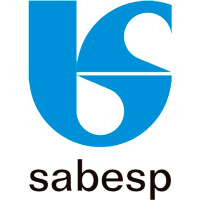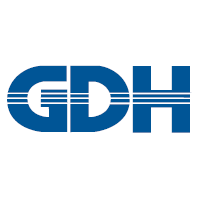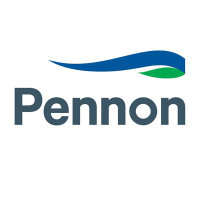
Severn Trent PLC
LSE:SVT

Profitability Summary
Severn Trent PLC's profitability score is 51/100. We take all the information about a company's profitability (such as its margins, capital efficiency, free cash flow generating ability, and more) and consolidate it into one single number - the profitability score. The higher the profitability score, the more profitable the company is.

Score
We take all the information about a company's profitability (such as its margins, capital efficiency, free cash flow generating ability, and more) and consolidate it into one single number - the profitability score. The higher the profitability score, the more profitable the company is.
We take all the information about a company's profitability (such as its margins, capital efficiency, free cash flow generating ability, and more) and consolidate it into one single number - the profitability score. The higher the profitability score, the more profitable the company is.

Score

Score
Margins
Profit margins represent what percentage of sales has turned into profits. Simply put, the percentage figure indicates how many cents of profit the company has generated for each dollar of sale.
Profit margins help investors assess if a company's management is generating enough profit from its sales and whether operating costs and overhead costs are being contained.
Earnings Waterfall
Severn Trent PLC

|
Revenue
|
2.4B
GBP
|
|
Operating Expenses
|
-1.8B
GBP
|
|
Operating Income
|
552m
GBP
|
|
Other Expenses
|
-322m
GBP
|
|
Net Income
|
230m
GBP
|
Margins Comparison
Severn Trent PLC Competitors

| Country | Company | Market Cap |
Operating Margin |
Net Margin |
||
|---|---|---|---|---|---|---|
| UK |

|
Severn Trent PLC
LSE:SVT
|
8.2B GBP |
23%
|
10%
|
|
| US |

|
American Water Works Company Inc
NYSE:AWK
|
29.1B USD |
37%
|
22%
|
|
| BR |

|
Companhia de Saneamento Basico do Estado de Sao Paulo SABESP
BOVESPA:SBSP3
|
74.5B BRL |
43%
|
27%
|
|
| US |

|
Essential Utilities Inc
NYSE:WTRG
|
11.3B USD |
36%
|
29%
|
|
| UK |

|
United Utilities Group PLC
LSE:UU
|
7.6B GBP |
28%
|
6%
|
|
| BR |
B
|
Basic Sanitation Company of the State of Sao Paulo SABESP
SWB:SAJA
|
4.7B EUR |
43%
|
27%
|
|
| HK |

|
Guangdong Investment Ltd
HKEX:270
|
39.2B HKD |
40%
|
17%
|
|
| CN |
C
|
Chongqing Water Group Co Ltd
SSE:601158
|
23B CNY |
13%
|
11%
|
|
| HK |

|
Beijing Enterprises Water Group Ltd
HKEX:371
|
24.5B HKD |
22%
|
6%
|
|
| UK |

|
Pennon Group PLC
LSE:PNN
|
2.3B GBP |
15%
|
-4%
|
|
| CN |

|
Beijing Capital Eco-Environment Protection Group Co Ltd
SSE:600008
|
22.7B CNY |
23%
|
16%
|
Return on Capital
Return on capital ratios give a sense of how well a company is using its capital (equity, assets, capital employed, etc.) to generate profits (operating income, net income, etc.). In simple words, these ratios show how much income is generated for each dollar of capital invested.




Return on Capital Comparison
Severn Trent PLC Competitors

| Country | Company | Market Cap | ROE | ROA | ROCE | ROIC | ||
|---|---|---|---|---|---|---|---|---|
| UK |

|
Severn Trent PLC
LSE:SVT
|
8.2B GBP |
17%
|
2%
|
4%
|
3%
|
|
| US |

|
American Water Works Company Inc
NYSE:AWK
|
29.1B USD |
10%
|
3%
|
6%
|
4%
|
|
| BR |

|
Companhia de Saneamento Basico do Estado de Sao Paulo SABESP
BOVESPA:SBSP3
|
74.5B BRL |
29%
|
13%
|
25%
|
16%
|
|
| US |

|
Essential Utilities Inc
NYSE:WTRG
|
11.3B USD |
10%
|
3%
|
5%
|
5%
|
|
| UK |

|
United Utilities Group PLC
LSE:UU
|
7.6B GBP |
6%
|
1%
|
4%
|
3%
|
|
| BR |
B
|
Basic Sanitation Company of the State of Sao Paulo SABESP
SWB:SAJA
|
4.7B EUR |
29%
|
13%
|
25%
|
16%
|
|
| HK |

|
Guangdong Investment Ltd
HKEX:270
|
39.2B HKD |
8%
|
2%
|
8%
|
5%
|
|
| CN |
C
|
Chongqing Water Group Co Ltd
SSE:601158
|
23B CNY |
5%
|
2%
|
3%
|
2%
|
|
| HK |

|
Beijing Enterprises Water Group Ltd
HKEX:371
|
24.5B HKD |
5%
|
1%
|
4%
|
3%
|
|
| UK |

|
Pennon Group PLC
LSE:PNN
|
2.3B GBP |
-4%
|
-1%
|
3%
|
2%
|
|
| CN |

|
Beijing Capital Eco-Environment Protection Group Co Ltd
SSE:600008
|
22.7B CNY |
11%
|
3%
|
6%
|
4%
|
Free Cash Flow
Free cash flow (FCF) is the money a company has left over after paying its operating expenses and capital expenditures. The more free cash flow a company has, the more it can allocate to dividends, paying down debt, and growth opportunities.
If a company has a decreasing free cash flow, that is not necessarily bad if the company is investing in its growth.




















































 You don't have any saved screeners yet
You don't have any saved screeners yet
